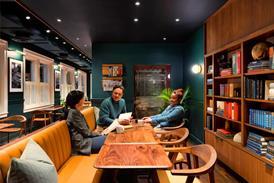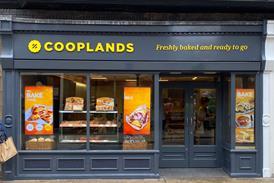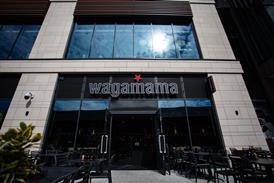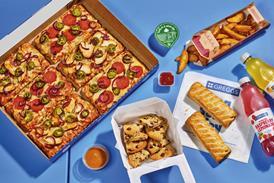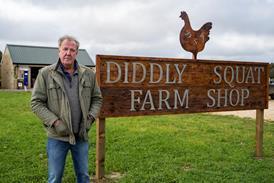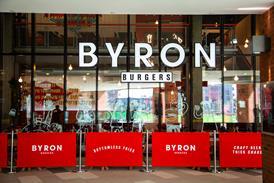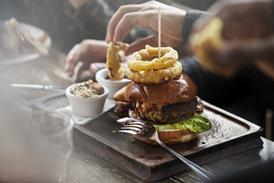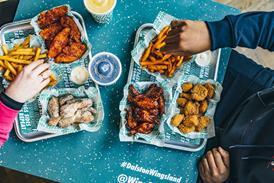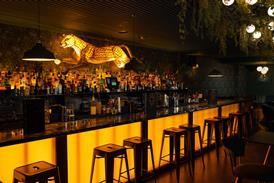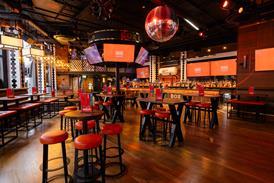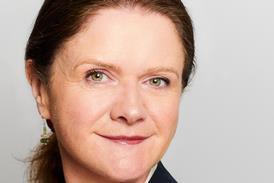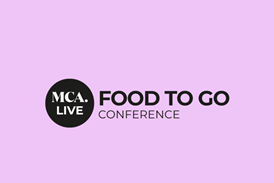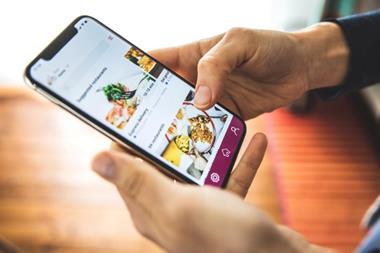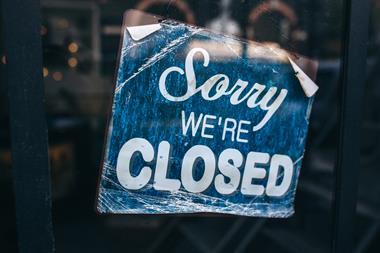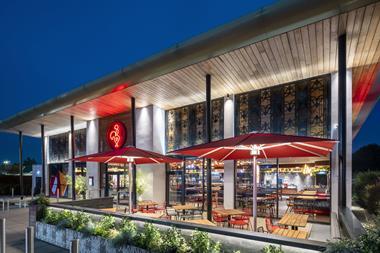The pandemic may have accelerated the abandonment of cash as a preferred method of payment, but should operators be ditching it all together? MCA’s deputy editor Georgi Gyton explores the issue
It’s Friday evening and a group of friends have just sat down at a table in a restaurant they have been looking forward to eating at all week. The server welcomes them and explain the process – they need to order from the menu via the QR code and can only pay via mobile or card.
The party exchange awkward glances. Though equipped with cash, none are able to pay by card. They shuffle out feeling embarrassed and disappointed.
The example may seem like a story designed to pull on the heartstrings, but a thread on LinkedIn earlier this month told a similar story.
The person had witnessed a young family enter a Nando’s restaurant – clearly out for a celebratory meal – who were then informed that they couldn’t pay by cash, resulting in them leaving the restaurant.
“The choice to not accept cash excluded that family from being able to eat and the disappointment was hard to watch,” according to the LinkedIn post.
The comment provoked an outpouring of responses, with comments ranging from incredulation that in this day and age people don’t have a debit card, to calls for all businesses such as Nando’s to accept cash.
This kind of customer may be an outlier, but as Covid accelerates the trend towards cashlessness, they have the most to lose - and they may not be as small a minority as one would assume.
Nando’s responded that its decision to not accept cash “is not one we’ve taken lightly”. The operator told MCA that, like many businesses, it had introduced cashless payments last summer as a safety measure for its customers and team, in response to the pandemic and outlined in government guidance.
“We understand that some customers value the option to pay in cash and we will be reintroducing this in September,” it confirmed, and said it was sorry for any inconvenience this caused its customers in the meantime.
For operators, there are clear benefits to going cashless. These include speeding up service, saving on cashing up at the end of the night, as well as fewer bank charges incurred from deposits. It is also safer for staff for there to be no cash on site. But there is the risk that certain customers will be excluded.
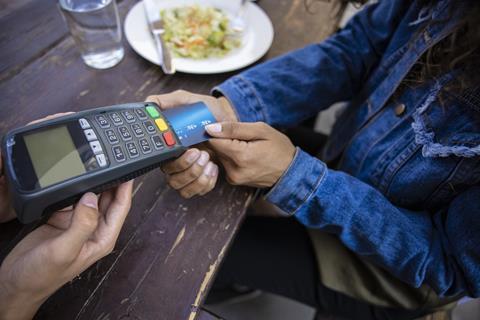
The state of play
Debit cards may have overtaken cash as the most frequently used payment method, in 2017, but there were an estimated 2.2m people in the UK who mainly use cash day to day, according to a report by HM Treasury in 2019, while there are around 1.7m people without a bank account.
The pandemic saw cash payments fall by 35% in the UK, last year, with five out of six payments now cashless, according to a UK Finance study. However the trend reflects the fact that places where people commonly use cash, such as pubs and cafes, were closed for large periods last year, alongside the guidance that businesses should encourage card payments.
While customers who got used to paying by card may well not go back to cash, there are still a significant number of people who choose to pay this way. UK Finance said it was entirely possible that cash may “bounce back” later this year or next year, and that the figures were not indicative of those who had chosen to live a cashless life.
Cash is more frequently used by elderly people, tourists and young people. Respondents to the Treasury’s survey noted the convenience and reliability of cash, as well as its anonymity, while others commented that tourists and those visiting the country for extended periods of time often used cash as their primary source of payment. It is also used as a budgeting tool by those on low incomes, with more than 15% of people with an income of less than £10,000 relying solely on cash, compared to 2.5% of all higher income groups.
An operator’s approach
Chilango had started to test going cashless in its City locations pre-pandemic. Its London Wall, Fleet Street and Monument restaurants had all scrapped cash payments at the end of 2019, with its other locations following suit when the pandemic hit. Managing director Richard Franks says the reason for the change at its sites in the City of London was in order to increase speed of service in what was a busy grab and go trade. The Mexican chain had also noticed that less than 10% of its transactions were now in cash so felt it was time to make the move.
It prepared its guests four weeks in advance, with information letting them know the restaurant was going cashless, and when the change was made it still had one till that would accept cash – just in case. “Since then we have stayed cashless – but we are not saying that we won’t go back,” he says.
Due to its core demographic of 25-45-year-olds, and the location of its sites in busy city centres, Franks is confident that for a large part of its estate, it is the right decision. However the customer base at its Manchester restaurant, and in its London Bridge site – “which is very tourist led” – are two in which it may potentially look to reintroduce cash payments, if customers start to request it, or if they feel people are choosing not to visit because of their inability to pay by card.
“If the demand is there and the guests start requesting it, then we would definitely look at putting it back. But we’d only have one till that takes cash, rather than all five,” he says.
In a bid to avoid any disappointment at the till, Chilango has placed stickers on its doors and at the head of the queue points to inform people it is cashless. So far there has been no push back from customers, but it is early days in terms of customers coming back – particularly tourists, he says.
For Vladimir Martynov, founder of Hawaiian poke chain Honi Poke, going cashless has been a decision he has no regrets about. Of its 11 sites, only one – Dean Street in Soho – still accepts paper money, due to the high footfall from tourists who for the large part often prefer this payment method.
The safety of its staff, the time and cost saving benefit of not having to cash up, the security of its staff, and avoiding being dealt fake notes, were among the reasons behind Honi Poke becoming a predominately cash-free operation. They did receive some feedback from customers who were annoyed about the change, but not enough to warrant reintroducing cash as a payment method. “I am very glad we did it. I am happy and the managers are happy, and it’s much easier from an operational point of view,” he says.
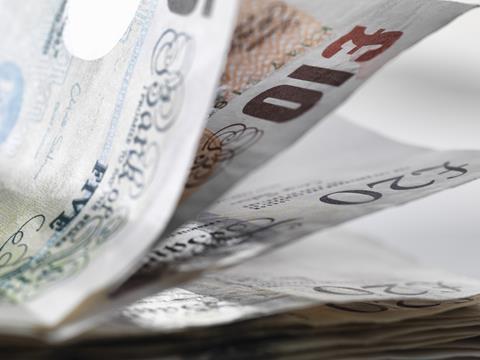
Loungers take a different stance, happily taking cash pre-pandemic to the present day. While the mix has changed significantly in terms how many people pay with cash, the business has not changed its approach to what payment methods it offers – only that it has added order and pay at table to its repertoire, says chief executive Nick Collins.
“Our thinking was that we serve a very broad demographic, and for a small portion of our customers paying with cash is important, so we want to be able to continue to look after them,” he explains. “And we don’t associate a great deal of risk with Covid and the accepting of cash.”
Pre-pandemic around 25-30% of its bill payments were with cash, with the figure now sub 10%. Collins believes it is likely to remain at the smaller end of the scale because people have got used to walking around with no cash in their pockets.
It’s all about the experience
The move towards card-only payment systems and order and pay at table is associated with improved satisfaction, according to Zonal. Research carried out by the hospitality technology solutions company alongside CGA found that two in five people agreed that technology had boosted their experience in a venue, with 79% stating they were either satisfied or very satisfied with the ease and speed of payment through tech.
Alison Vasey, group product director at Zonal, says technology may have been adopted by many as a necessity, during the pandemic. But she predicts “it will become increasingly commonplace, as long as it is implemented to solve pain points that enhance the overall customer journey – think faster payments, hyper-personalisation, more engaging loyalty-schemes and greater convenience.
“Cash definitely still has a place within the sector, but we firmly believe it’s also important to ensure that technology is easy to understand and use for all customer demographics,” says Vasey. “Ultimately, it’s down to individual businesses to decide whether not accepting cash payments works for them and their customers.”
Nick Popovici, chief executive of Vita Mojo agrees the shift towards card-only seems to have been permanent, with the majority of customers still choosing to use this technology.
“Pre-pandemic, around 30% of transactions in London were in cash and 70% card, this changed to around 99% of transactions carried out on card and 1% cash, and we are not very far off from that now,” he explains. “The pandemic acted as a catalyst but the trend is being driven by customers.”
Where consumer regression has taken place in the use of technology, this has mostly been where it has actually created a pain point. Customers want technology that is intuitive, seamless and works, says the software company. “The digital journey has to be as smooth as it is for in person service. Get it wrong and you’ll lose the customer, get it right and you’ll have a fan for life.”
While card payments might be the way forward, Popovici believes hospitality operators should still accept cash from customers who prefer to pay that way – but maybe one from just one till rather than six, he suggests. “People shouldn’t be left out because they cannot use cash.”
For operators looking to ditch cash altogether there are various things to consider: inclusion, the tech savviness of the customer or simply the customer’s desire for human interaction. Customer demographic and geographic location are also key. What works in a QSR outlet in the City is likely to be vastly different to a remote country pub with an older average customer, for example. “I think card is the way forward, but I think it’s a case by case, and location by location opportunity,” Franks says.
While the digital world is not going away, the question as to whether it’s best to ditch cash now, or in the future, is one for individual businesses. For Peter Martin, MCA’s contributing editor, the important point is how customers might be affected. “If you are top end it probably doesn’t matter at all, but if you are more mass market there may well be an issue.”
For brands in the middle market who are very family orientated, the children that came in with their parents may also choose to visit as teenagers with friends – and they may well not have a bank card. It is important to understand brands are making a decision that “could well have big knock on effects on your reputation down the line.
“If you spent a lot of time looking after them as kids then you need to do the same when they are teenagers. They are also probably the people you want working for you at some stage as well.
“One thing is absolutely certain, although customers are coming back and some brands have gone to the wall, there are new entrepreneurs coming into this market and competition is not going away,” Martin adds. “People can always find somewhere else to go.”
Precis
ANALYSIS
Cashless society
It’s Friday evening and a group of young teenage friends have just sat down in a restaurant they have been looking forward to all week. The server welcomes them and explains the process – they need to order from the menu via the QR code and can only pay via mobile or card. The party exchange awkward glances. Though equipped with cash, none are able to pay by card. They shuffle out feeling embarrassed and disappointed. The example may seem like one designed to pull on the heartstrings, but a thread on LinkedIn earlier this month told a similar story. This kind of customer may be an outlier, but as Covid accelerates the trend towards tech adoption cashlessness, could operators risk alienating a key customer?

